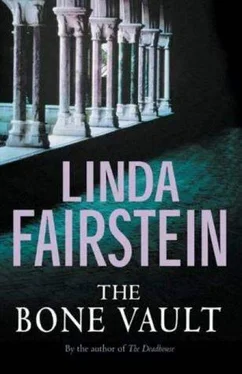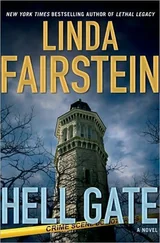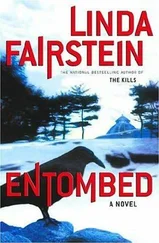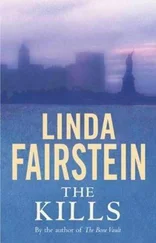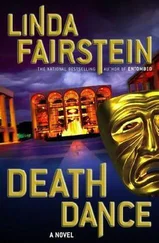“I’m the administrative director of the museum, sir. The keeper, as they call us in England. Everything in this wondrous place is under my care. We have to know how to maintain all these specimens, how to display them appropriately, when to acquire something new.”
“You got a body count?”
“Ah, Mr. Chapman. A little more respect for our dead. The closest I can give you is about thirty-two million species and artifacts. Mammals alone-I presume that’s your area of interest-we’ve got over 270,000 specimens, and that includes their skeletal material, their skins, and their innards, which are in jars all over the building.”
“On display?”
“Just like an art museum. Maybe one, maybe two percent of what we’ve got is out on view. But you know about that. I understand you’ve already begun your questioning across the park, at the Met.”
“You’ve spoken to someone over there?”
“Well, I could simply say I’ve read today’s newspaper, couldn’t I? In fact, Anna Friedrichs told me first. She was here yesterday, in the afternoon. She was very fond of Katrina.”
“Are you close to your colleagues at the Met?”
“To begin with, Mr. Chapman, many of them don’t even consider us to be in the same business. Our institutions may both be called museums, and we’ve each got vast holdings, but most of the similarities end there. Anna’s interests have a bit more humanistic content than those of her other colleagues. I think that brings her closer to us. More simpatico. What do you know about the history of natural history museums?”
“Not a thing,” I answered. Mamdouba’s smile was magnetic. He stood up and came out from behind his desk, walking over to sit on a sofa that was on the far side of the room. We both turned to look at him.
“The British did it first, you know. Seventeen fifty-three. There were earlier collections, in Paris and even at Oxford, but it was the British Museum that was open to the general public, to all ‘studious and curious’ persons, as its grant allowed. It was never meant to be just art, but cabinets full of all kinds of odd things that people had collected. Birds, animals, and human ’monstrosities‘-all kept in spirits. Wine, frequently. Alcohol proves to be a wonderful preservative. Even the royals had the bug. You don’t know about Peter the Great?”
“Know what?” Mike was always ready to take on historical data.
“When he discovered his wife had a lover, he had the man beheaded. He actually placed the head in a large jar and had it pickled. Deposited it in the empress’s bedchamber, as a painful reminder of the price of her infidelity. Peter kept an entire collection of biological oddities. Centuries later, his descendants found them-even the fermented head, in rather good shape-still on their shelves in the palace.”
Surely, Mamdouba would get us beyond the sensational. His entire career was invested in this work. “Andthis museum?”
“The greatest in the world. With a very similar start, actually. I can show you the first annual report, from 1877. Bones of an extinct dodo; three thousand bird skins from the ‘cabinet’ of Prince Maximilian of Neuwied; hundreds of beetles; private vaults of the French consul general in New York; mollusks and shells that-for lack of a formal home-had been stored in the Wall Street offices of Brown Brothers, the old investment firm.”
“Where in the world did the money come from to build such an enormous showcase?”
“Aha, Miss Cooper. This was the golden age of exploration. Theodore Roosevelt, Junior-every schoolchild knows that statue out in front. But there were so many other extraordinary men of great vision. J. P. Morgan, Morris Jesup, Albert Bickmore, and Teddy Roosevelt’s father, too.” Mamdouba reeled off the names, standing now and pointing at photographs on the wall.
“These men had the vision that led to the discovery of the North Pole, the charting of the Gobi Desert, with the richest dinosaur fields on earth, the penetration of the deepest jungles on the African and South American continents.” The fingers of his left hand spread across the length of his chest as he pressed against it. “Weare the living history of the evolution of life on this planet, constantly changing, always interpreting and incorporating new data. A tremendously vital research organization, also. Not just a bit of oil and canvas left to hang for a century or two in a gilded picture frame on a museum wall.” He grinned again as he returned the salvo of his friends across the park at the Met.
“Would you mind showing us where Ms. Grooten worked when she was here?”
“I’ll be glad to have someone take you around. We’ve dedicated an entire acre of basement space to arranging and archiving the exhibit.”
“An acre?”
“Yes, Mr. Chapman. After all, we’ve got twenty-five acres of floor space within our buildings. Come this way.” He guided us out past his receptionist into the main hallway.
“What’s upstairs?”
“The fifth floor? The longest corridor in North America, outside of the Pentagon. There may be something that rivals it at Versailles or Windsor, but it’s the length of three city blocks. Goes a lot farther than the entire village in which I spent my youth.”
“Can we see what’s up there?”
His hesitation was almost imperceptible, but the rest of his delivery had been so smooth that I’m sure Mike caught it, too.
“When President Raspen returns from her voyage, I’m certain she will approve.” He went right on with his polished performance. “Surely you know Margaret Mead? Well, she had the turret office above mine all to herself. A remarkable woman. More than fifty years she was associated with this museum. Half a century of work in the field, all in the most primitive areas of the world, if you can imagine that.”
Mamdouba pressed the elevator button and we waited for the slow machine to grind its way up to four. We took it down to the first floor and again entered the North American mammal hall. He stopped at a guard desk and used a telephone to call someone to take us the rest of the way.
“What’s going on with the animals? Somebody sick?” Mike asked, referring to the crew of gowned and masked scientists still at work inside several of the dioramas.
“Aren’t these wonderful? It was one of our original explorers, Carl Akeley, who designed the first diorama here. Before his time, people stuffed animal skins with straw. It was not only bad aesthetically, because of all the lumps, but there was frequently insect infestation. Akeley was a great sportsman and hunter. He knew the animals intimately.”
Mike was more interested in the taxidermy technique than I was. He listened closely as Mamdouba described the famous Akeley innovation. “The first thing Carl did was pose the actual animal’s skeleton. The real one, after the body was cleaned. Then he used clay to sculpt the creature’s muscles and tendons, on top of its very own bones. Completely true to life. Finally, he’d take the original skin and place it over the reconstructed animal. That’s why they look so lifelike.”
More than I needed to know about the lost art of taxidermy.
“So the little men and women in white, what are they up to today? Plastic surgery for the old animals? BOTOX?” Mike and I watched as they dabbed with Q-tips at ears and hooves and antlers.
“Precisely, Mr. Chapman. Just the occasional touch-up. Keep their teeth white and their coats shiny. The surgical masks do look a bit serious, don’t they? We make our workers take that precaution when they’re in the cabinets. You see, one of the surefire ways to kill the bugs when you’re preserving the natural skins is to make certain there’s enough arsenic in the treatment.”
Читать дальше
